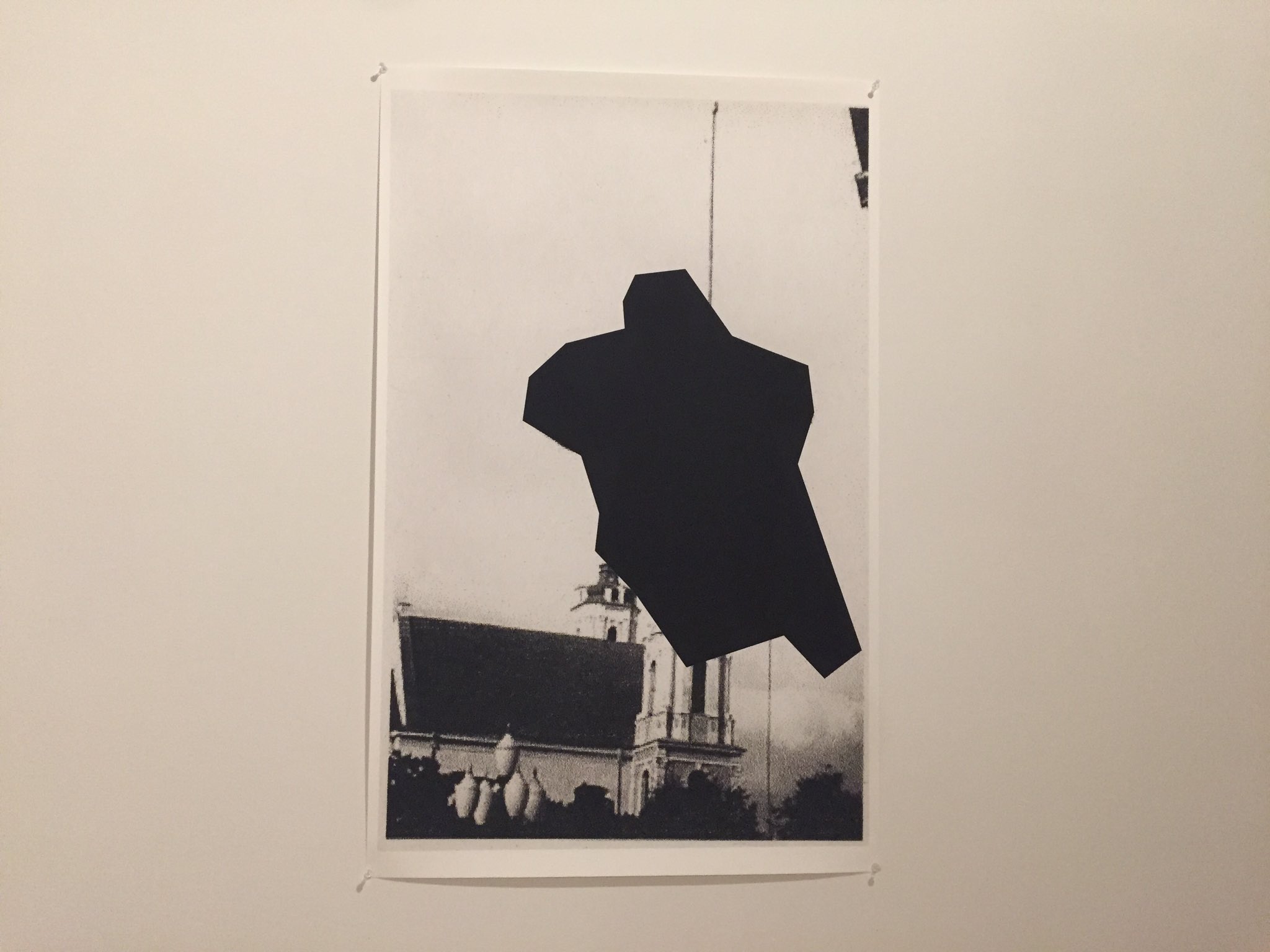It was still dark on a May morning in 2011. Mark Anthony Vincent was driving his van through Reidsville, North Carolina, on the way to deliver auto parts. He was tired.
The van veered off the road and hit something in a roundabout. A Confederate soldier statue’s marble head fell 32 feet, obliterating the vehicle’s engine. Vincent had knocked over a monument in the middle of a flower bed, in the center of a factory town, on accident. He could’ve died. The column-raised statue was in ten pieces; it had been there for more than a century.
Reidsville had no choice but to face the question: do we rebuild this Confederate monument? There was no way to avoid deliberate action. Replace, or refuse to honor the cause of the slaveowning South again.
Artist Jenny Vogel came across Vincent’s story in the Wall Street Journal as she began to collect images of public squares around the world where political monuments had been removed, or had fallen due to natural causes. For her the disappearances themselves left something at the sites.
“We want to commemorate something, we put our memory into stone,” Vogel says. “Memory obviously is a flexible thing, and each time we retrieve it, it changes, something gets used up, and then gets added to the content. We think of statues in this way, that they’re set in stone. But they don’t live in a vacuum, either.”
This is the dilemma Vogel explores in ‘What Death Can’t Touch,’ a series of prints she completed in the spring that now hang at TWU’s West Gallery. One depicts the removal of the Lenin Statue in Bucharest in 1991. It took blow torches, jackhammers, a wrecker’s ball, two days of applied force and a a crane with noose to complete. Vogel covers the structure as it hangs from the noose with a black vector-drawn shape; you can still tell what it hides, and the combined effects of recognition and abstraction make the blot an ominous figure that haunts the square.
Removal is essential in beginning the discussion about how to make sites of Confederate monuments into teaching opportunities in the United States. But the fixation on rushing, on overnight takedowns and clean breaks with material, can make way for decision-makers – and citizens — to congratulate themselves too soon.
“I don’t think that there is any honest way that you can support civil rights and leave the statues as they are. But in a way removing them is the easiest thing you could do,” Vogel says.
An answer, for Vogel and many artist-historians, is to build counter-monuments at sites to acknowledge their complicated histories. New media is an obvious ally for artists who hope to reflect time in layers. So is the practice of collaborative installations, which require the community’s participation in the material itself. Vogel mentions Esther Shalev-Gerz and Jochen Gerz’s ‘Monument Against Fascism,’ a lead and aluminum panel in Hamburg that residents signed with a metal pencil to affirm a statement against fascist ideology. The monument sank into the ground for seven years since its first making in 1986. If you go now, you can still see it, but only the top peeks out.
The impetus for the censor-shapes Vogel makes in ‘What Death Can’t Touch’ was a row of signatures, too, on government papers attached to Project Blue Book studies that probed reports of UFOs. They’d been redacted, and the cross-outs were sized differently according to the scribbles, the cover changing to accommodate their shapes.
“They are redactions that you see through. In a way that’s perhaps a stand-in for how our memory works, trying to forget something by putting it into stone. Does that absolve the memory? Are we now no longer personally responsible?” Vogel asks.
As I pace back and forth considering Vogel’s questions on the phone, I can feel how far away the theory-lab of our conversation is from what’s happening in Dallas. At any moment the Robert E. Lee statue at Lee Park could come down. It’s been decided, but not scheduled. Everyone’s already talking about who the park should be renamed for. There’s an air of relief that the statue will be gone. But what if it’s removed overnight, like the monument at UT Austin, with no one there to document this attempted correction? Those attending to the materiality and process of the statue’s removal – the mayor’s appointed task force – are not artists. Sculptor Barvo Walker is a craftsperson who told the Dallas Morning News how he admires the detail of Robert E. Lee’s horse, that the statue is “a marvelous piece of art.”
And the urgent point is missed altogether.
Vogel grew up in Nuremberg and belongs to a school of artists who understand the urgency of care a counter-monument needs, in concept and execution. And we have artists in Dallas, as Peter Simek explains, who do, too. Before the task force came together, artist Lauren Woods sent me an essay by James E. Young, to explain the ideology she espouses when it comes to the statues, and what comes after them:
“For a new generation of German artists, the possibility that memory of events so grave might be reduced to exhibitions of public craftsmanship or cheap pathos remains intolerable. They contemptuously reject the traditional forms and reasons for public memorial art, those spaces that either console viewers or redeem such tragic events, or indulge in a facile kind of Wiedergutmachung, or purport to mend the memory of a murdered people. Instead of searing memory into public consciousness, they fear, conventional memorials seal memory off from awareness altogether; instead of embodying memory, they find that memorials may only displace memory. These artists fear that to the extent that we encourage monuments to do our memory work for us, we become that much more forgetful. They believe, in effect, that the initial impulse to memorialize events like mass murder may actually spring from an opposite and equal desire to forget them.”
Woods, whose influence lurks in recent comments by Councilman Philip Kingston and others, is the artist the city should trust most with the future of Lee Park, and that begins with a full documentation of the monument’s teardown — a moment that will not return. But no one can plan around when the statue comes down, as that time and date remain a mystery. If a 1936 Dallas Morning News story is true, a time capsule with documents inside awaits whoever’s at Lee Park to supervise and enact the removal. The unveiling itself was performed with care. Why should its disavowal not be twice as deliberate?
Until then, we’ll all have to wait, and watch for cranes in a city where cranes are everywhere, and the ghosts of what they’ve taken linger in ways Dallas has only begun to understand.
Jenny Vogel speaks at TWU Sept. 26th as part of The End and The Beginning, on view in the East | West Galleries until Oct. 15th 2017.





